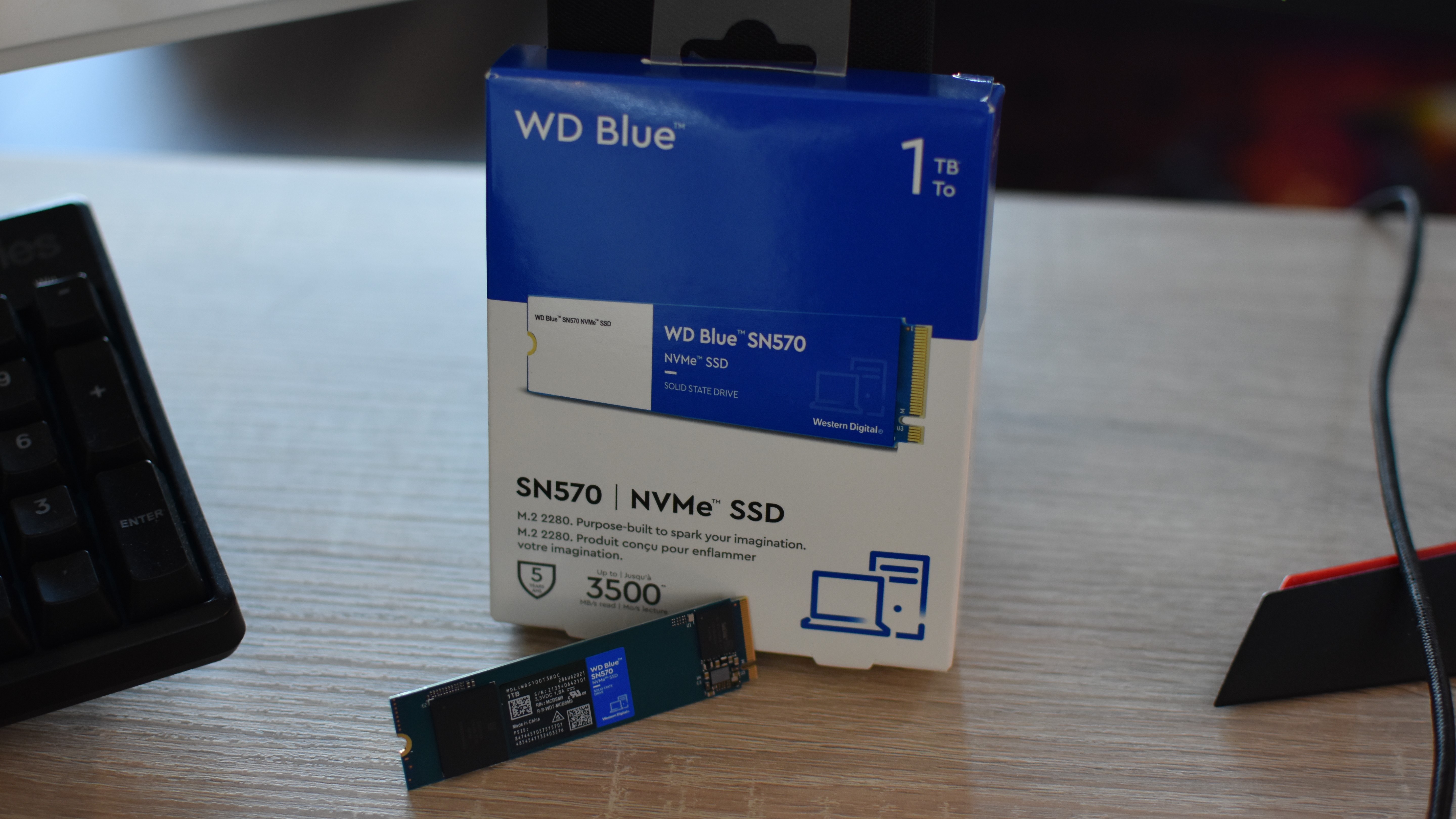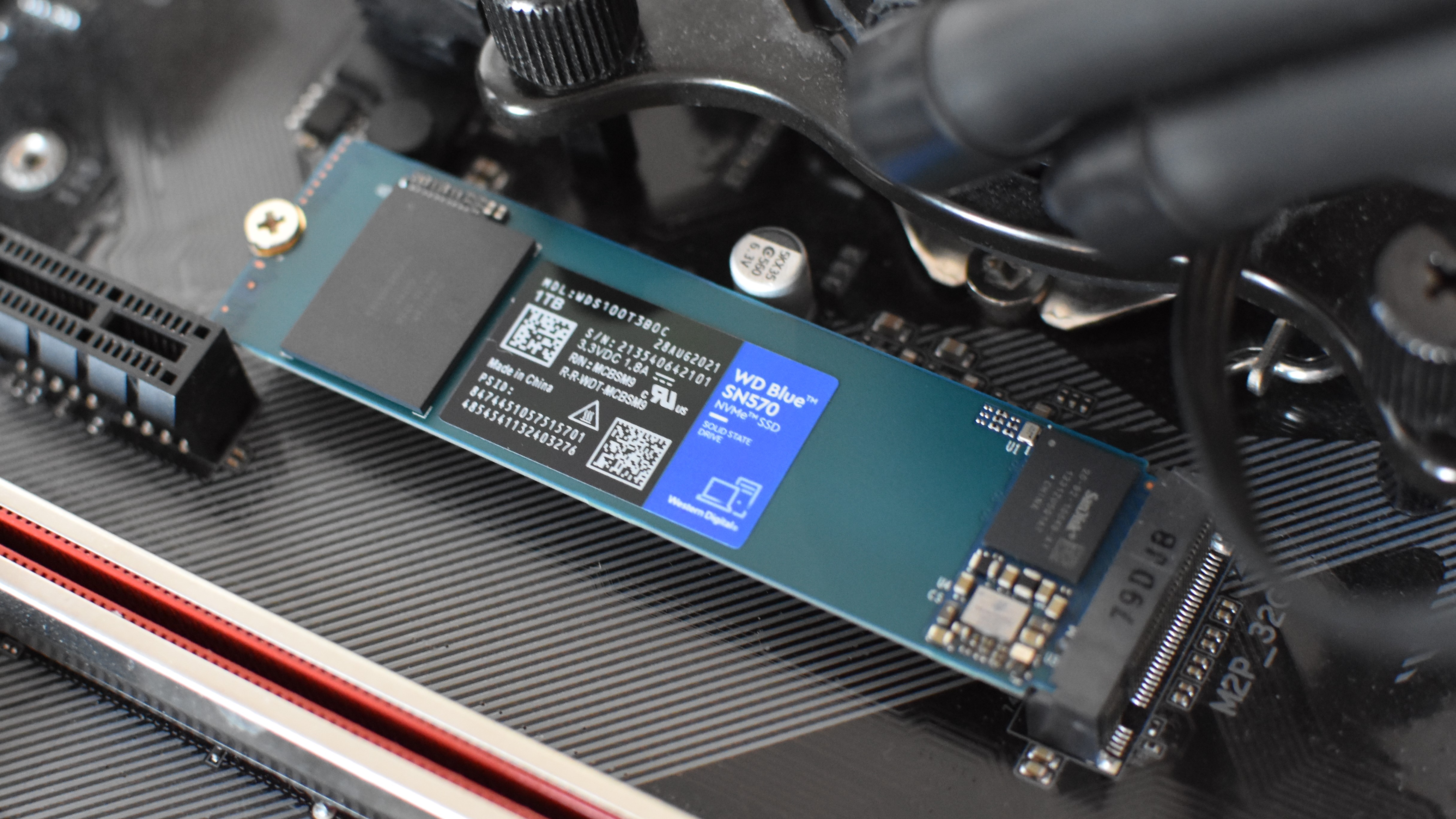Perhaps I’m being a bit harsh on the earlier Blues – the WD Blue SN550 actually made it into our best SSDs for gaming rankings, and laid the groundwork for this new model with higher read/write speeds than you might expect from an affordable SSD. Still, the SN570 asserts even greater ambition, claiming maximum sequential read and write speeds of 3500MB/s and 3000MB/s respectively on the 1TB model. The 1TB SN550? Only ever promised 2400MB/s reads and 1950MB/s writes. The WD Blue SN570 is no less of a budget-friendly SSD either. In fact, right now all three o its capacities are cheaper than their SN550 equivalents were Katharine reviewed the latter in 2020. You’re looking at just £37 / $54 for the 250GB model, £49 / $58 for 500GB and an especially enticing £93 / $110 for the 1TB model that I received for testing. The only disappointment here is the lack of a 2TB version, though 1TB is usually enough for most PC builds even without any supplementary hard drives. Those top speeds also stood up in CrystalDiskMark’s standard sequential test, in which the SN570 recorded a 3555MB/s read speed and a 3059MB/s write speed. Like a 300mph car, you’re unlikely to ever get close to these speeds in the everyday traffic of Windows data transfers, but what makes the SN570 special is how well it maintains the pace under load. CrystalDiskMark also has a much tougher random 4K, 8-queue-8-thread test, in which the SN570 scored a 1830MB/s read speed and a 1889MB/s write speed – both utterly superb for a PCIe 3.0 drive. For comparison, the WD Blue SN550 managed 1414MB/s and 1434MB/s respectively, and that was already embarrassing some of the lower-end competition. Even the Samsung 970 Evo Plus can’t keep up, having produced a 1669MB/s read speed and 1476MB/s write speed in the same test. AS SSD’s random 1GB 4K test also threw up a very encouraging write speed of 166MB/s, again besting both the old SN550 and the ostensibly higher-end WD Black SN750. However, read speed dipped somewhat: its 42MB/s result is still good, though that’s also a couple of megabytes slower than what the SN550 recorded. Overall, mind, there’s no doubt the new SN570 is the faster SSD. Besides its other benchmark victories, copying the entirety of Assassin’s Creed Odyssey to the SN570 took 34 seconds less than than to the SN550, taking 2 minutes and 48 seconds total. Even though that’s not on the level of the PCIe 4.0-powered WD Black SN850, that’s…y’know, a PCIe 4.0 model. And while Intel Alder Lake could open up this drastically faster interface to PC owners who’ve yet to take advantage of it through an AMD Ryzen build, PCIe 4.0 drives remain pricier and thus less accessible than their 3.0 cousins – especially if you’re factoring in the cost of a new motherboard and CPU. An SSD that’s both as swift and as cheap as the WD Blue SN570 therefore makes a whole lot of sense. And yes, this is a fast drive, not simply one that’s fast for the price, though for the record it does make short work of similarly low-priced NVMe rivals like the Crucial P5 and Kingston KC2500. Neither of these could match the SN570’s CrystalDiskMark results when I tested them as well. Really, the worst thing you could say about the SN570 is that you shouldn’t bother with the 250GB model – not when the 500GB version is only a few pounds/dollars more. It’s a crowd-pleasing , high-performing SSD that deserves to be the first port of call for all but the most cutting-edge PC, whether you’re just installing an SSD upgrade by itself or speccing out a whole new rig.

